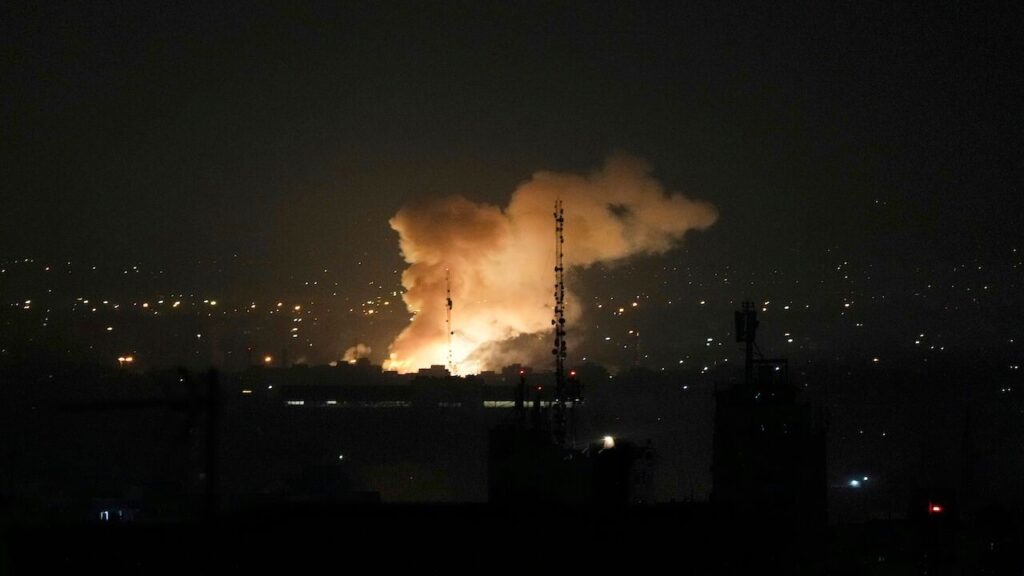Iran has announced it will respond with “full‑force” against Israel after unprecedented Israeli airstrikes struck over 100 Iranian nuclear, ballistic missile, air defence and military leadership targets on 12–13 June 2025. The assault resulted in notable Iranian military and scientific casualties, prompting Iran to launch a sophisticated counter‑offensive. Analysts warn the escalating showdown could tip regional hostilities into a broader, possibly global, conflict.
Israeli Defence Minister Benjamin Netanyahu defended the airstrikes as necessary to pre‑empt Iran’s nuclear weapons capability, claiming they struck multiple enrichment sites— notably Natanz and Fordo—alongside key military infrastructure. Iran confirmed 78 fatalities, including senior generals, nuclear scientists and civilians, with over 320 injured. Israel asserted significant damage to Iran’s nuclear infrastructure, echoed by the UN nuclear watchdog’s confirmation of destruction at Natanz.
Within hours, Iran unleashed its most extensive aerial response to date. Over 150 ballistic missiles and more than 100 drones targeted Israel—codenamed “Operation True Promise III”—marking the latest phase of tit‑for‑tat escalation in the 2024–25 Iran–Israel conflict. While most projectiles were intercepted, multiple explosions were reported in Tel Aviv, Jerusalem and Rishon LeZion. At least two Israelis were reported dead and dozens injured.
The US military contributed ground‑based air defence support to Israel, shooting down numerous Iranian missiles. Iran’s UN envoy Amir Saeid Iravani accused Israel—and by extension the US—of complicity in what he called a “terrorist regime” attack, urging the UN Security Council to intervene. Iran’s Supreme Leader Ayatollah Ali Khamenei affirmed that areas across Israel “would be unsafe” and promised “severe punishment”.
Military analysts highlight five key escalation trajectories. First, Iran may turn to more missile barrages and drone offensives calibrated to overwhelm Israel’s air defence systems. Second, proxy groups aligned with Tehran—Hezbollah in Lebanon, Houthi fighters in Yemen, and Iraqi militias—could increase cross‑border or maritime attacks on Israeli or US targets. Third, Iran could disrupt vital economic chokepoints like the Strait of Hormuz, potentially targeting oil infrastructure and international shipping to influence global energy markets. Fourth, Tehran could intensify cyber operations against Israeli systems, from infrastructure to financial networks. Fifth, sophisticated long‑range missile capabilities—such as the hypersonic Fattah‑1 and Qassem Bassir—may be deployed for deeper strikes.
Iran’s arsenal is extensive. It possesses roughly 3,000 ballistic missiles—including SRBMs and MRBMs—with widespread use of mobile launchers for strategic flexibility. Its advanced drone technology, noted in deployments to conflict zones like Ukraine, further enhances Tehran’s ability to project force covertly across borders.
Israel’s air campaign aimed to degrade Iranian air defence and missile reserves, targeting command centres and nuclear technology infrastructure. Experts argued that these operations could pave the way for diplomatic pressure aimed at curbing Iran’s nuclear ambitions—or, conversely, galvanise Tehran to accelerate them as a deterrent.
Oil markets have responded anxiously. Brent crude surged over 12 percent on fears of regional disruption to supply and shipping routes. Economies remain vulnerable to further volatility if disruptions continue or intensify.
Globally, the G7 summit in Canada has shifted into crisis mode. Major powers urge de‑escalation even as they reinforce military deployments in the Middle East. The resumption of stalled nuclear negotiations in Oman now hangs in the balance as Tehran contemplates diplomacy following what it deems acts of war.
The international community stands at a dangerous inflection point. The confrontation between Iran and Israel—once shadow warfare—has transformed into overt missile exchanges, bilateral military brinkmanship, and threats to global energy stability. Diplomatic interventions risk being overtaken by the momentum of military engagements and ideological defiance. As both sides commit to escalating operations, the wider region waits nervously to see whether restraint prevails or if the conflict spirals beyond the Middle East.




 Diplomacy Depends on Consent, Jaishankar Asserts
Diplomacy Depends on Consent, Jaishankar Asserts 